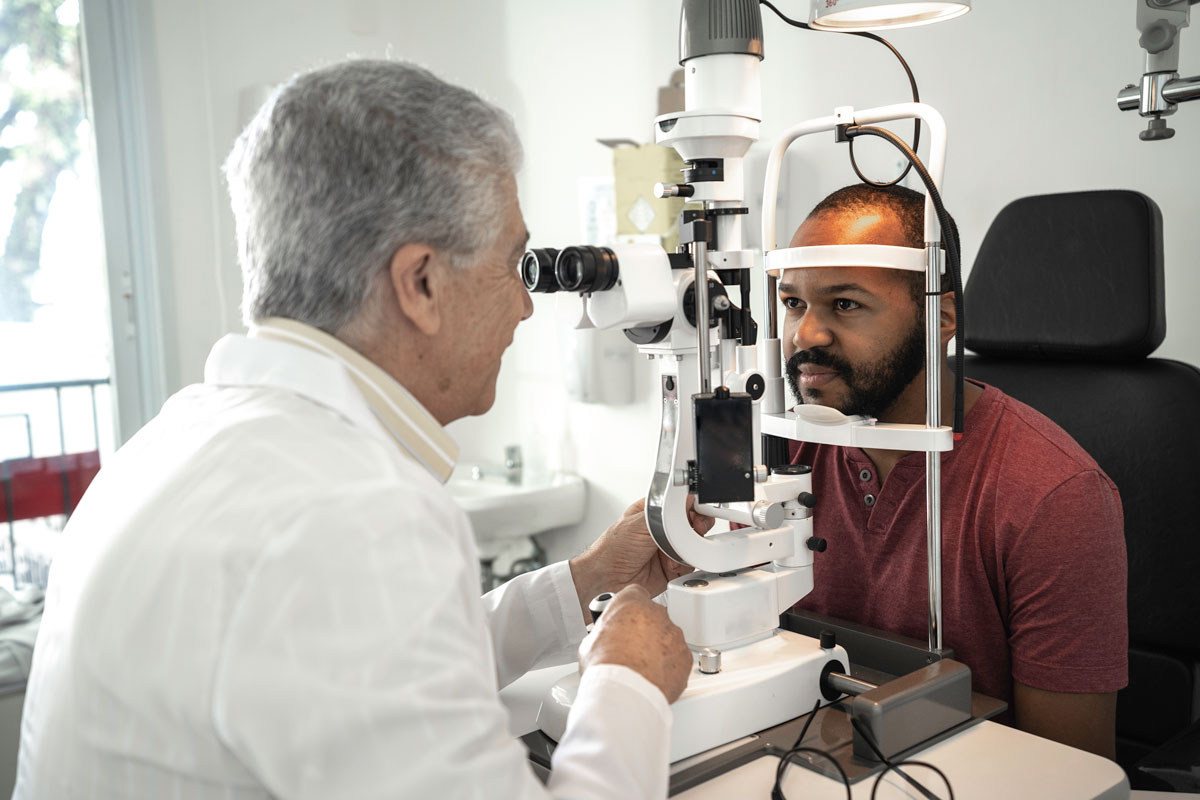 |
| Blacks and Hispanics were found to be the least likely among glaucoma patients to see an optometrist or ophthalmologist for care, study shows. Photo: Getty Images. |
Despite the higher prevalence of glaucoma among individuals of African descent and Hispanic ethnicity compared with whites, a recent study found that these populations are less likely to receive outpatient care. Particularly, the largest gaps were observed between whites and non-Hispanic Blacks, the latter being the least likely of all racial groups included in the study to see an ophthalmologist or optometrist for glaucoma care.
Researchers performed an analysis using data from adults enrolled in the Medical Expenditure Panel Survey (MEPS) between 2002 and 2017 in order to compare rates of outpatient follow-up for glaucoma management between patient groups of different races and ethnicities. The survey, distributed to 15,000 US households each year, provides researchers with data such as sociodemographic characteristics, current diagnoses and healthcare utilization.
Of the 376,263 adults in the survey’s database, 5,815 had a self-reported diagnosis of glaucoma and were included in the analysis. Non-Hispanic white individuals made up 73% of the cohort, non-Hispanic Blacks made up 13.9% and Hispanics made up 7.6%. For a patient to be characterized as having received outpatient glaucoma care, they must have had at least one visit with an optometrist or ophthalmologist during the survey year.
The researchers found that over two-thirds of glaucoma patients reported receiving outpatient care (70.6%), although this proportion has gone down over the last two decades. Between 2002 and 2005, 76.1% of patients received care compared with 70.3% from 2014 to 2017.
The racial disparities in rates of outpatient glaucoma care were evident from the data, which showed that non-Hispanic Black adults, as well as Hispanics, were significantly less likely to see an ophthalmologist for glaucoma management. Those with public health insurance (35% of the cohort) or from the South or West of the United States were also less likely to receive care. The following groups were also less likely than whites (9.9%) to see an optometrist for their glaucoma: non-Hispanic Blacks (6.7%), Hispanics (7.7%) and multiracial or those who identified as “other” (4.7%).
“Non-Hispanic Black adults were 22%, 43% and 36% less likely than non-Hispanic white adults to receive outpatient glaucoma care with an ophthalmologist, optometrist and ophthalmologist or optometrist, respectively, after adjusting for income, insurance coverage, education and other patient-level characteristics,” the researchers wrote in their study. “Non-Hispanic Black adults reported the lowest rates of outpatient glaucoma care with an ophthalmologist (64.6%), followed by Hispanic adults (65.5%). These findings raise concerns regarding equitable access to glaucoma care.”
According to the analyses performed, the researchers determined that the decreased utilization of outpatient glaucoma services observed in Black and Hispanic Americans is independent of insurance coverage. However, they did hypothesize a few possible reasons for the racial differences.
“Race was reported to be associated with level of trust in their physician among glaucoma patients, with lowest levels of trust among non-white patients, most of whom were Black,” the researchers wrote. “Mistrust may lead to decreased satisfaction and increased risk of failing to seek follow-up care. Indeed, a single-center study of a county hospital population similarly found Black and Latino patients had the highest odds of inconsistent glaucoma follow-up.”
It’s important that the factors driving these disparities in healthcare utilization continue to be investigated and recognized so that potential solutions can be implemented. Increasing the rate of follow-up for glaucoma patients in these populations will contribute to better visual outcomes including the prevention of blindness, the study authors concluded in their paper.
Cheng BT, Tanna AP. Association of race and ethnicity with the frequency of outpatient glaucoma care. Ophthalmology. November 30, 2021. [Epub ahead of print]. |

